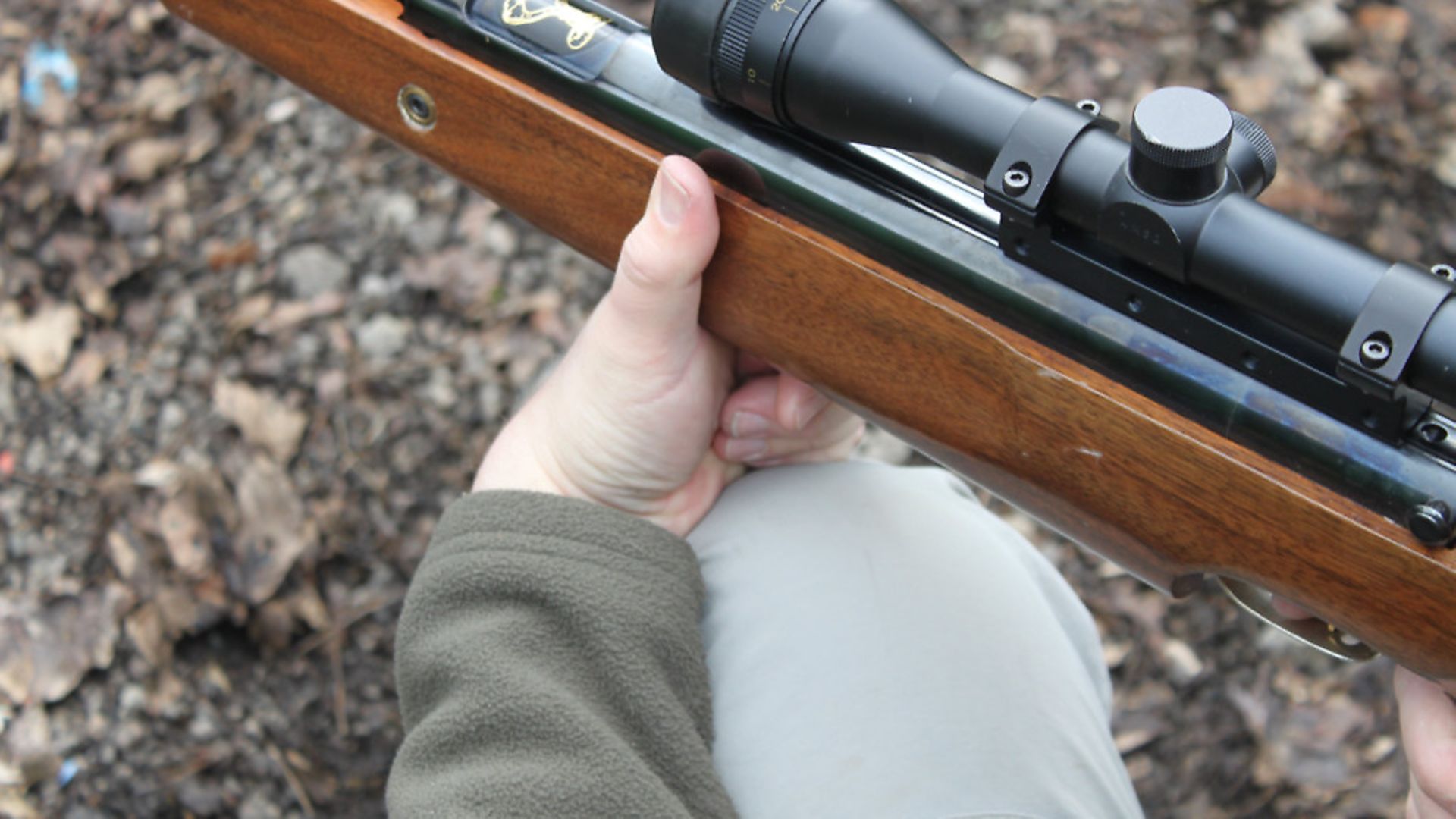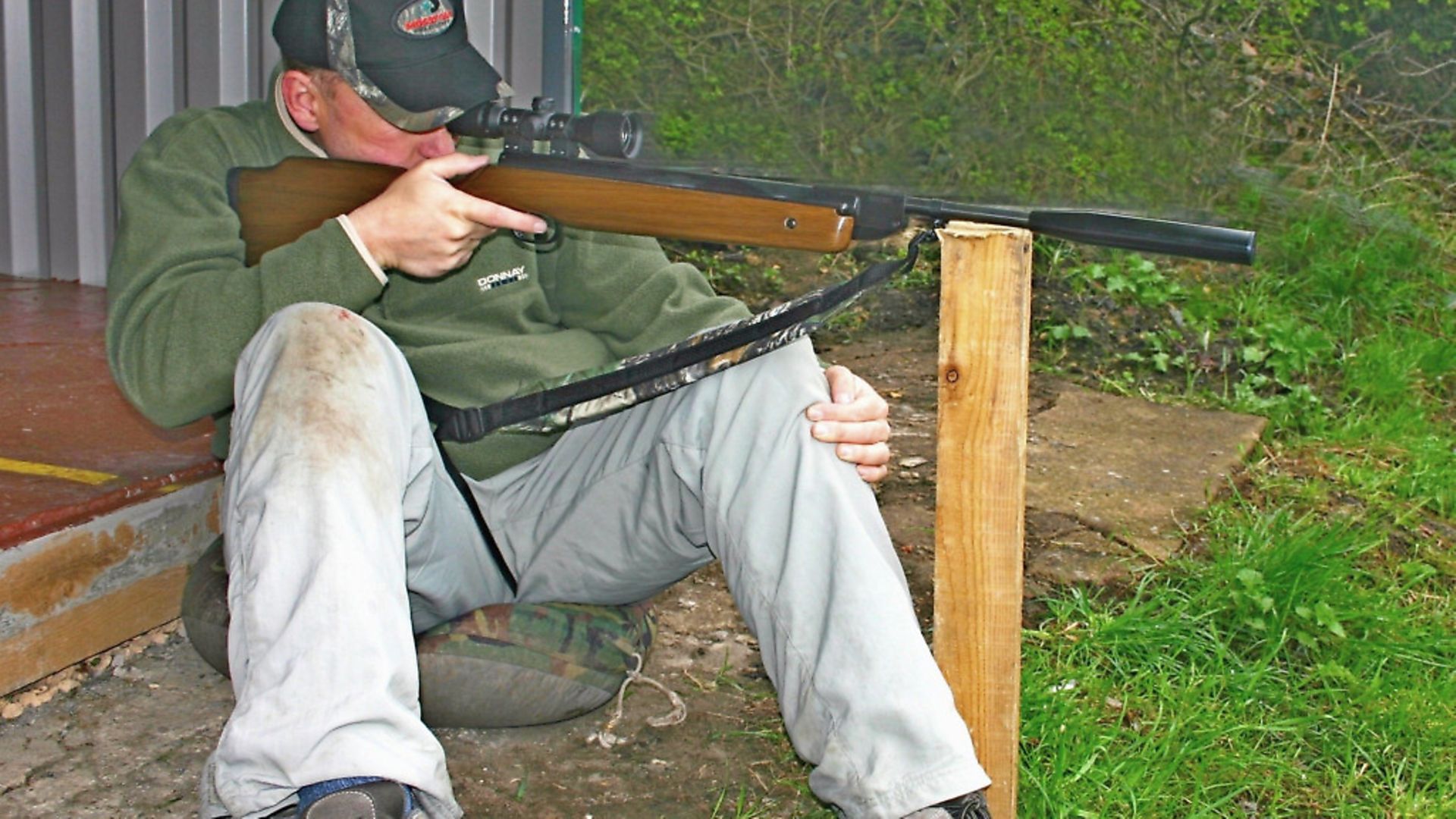Hold on a second…and your springer shooting will definitely improve, says Tim Finley
 credit: Archant
credit: Archant
Shooting with my son, George, and his new, spring-powered, break-barrel air rifle got me really concentrating on how to shoot a recoiling spring rifle, and how to get the techniques across. One brilliant way of thinking about a springer was penned by the great American Airgun writer, Tom Gaylord. He called it the ‘artillery’ hold, and the name comes from the fact that an artillery piece moves a lot during recoil, and yet the gun remains extremely accurate even at long ranges. He was finding it hard to get the best out of a Beeman C1 after reading the manual where it instructed the user to hold the rifle firmly. He really did hold it very tightly, and was not getting the tight groups he knew such a fine rifle should produce, but when he loosened his grip, the groups shrank. Hmmm...but why?
When a spring rifle is fired, the first thing that happens is the movement of the piston. That imparts recoil to the rear of the rifle, and since the piston is only a fraction of the rifle’s weight, this recoil is small, but when the piston comes to a sudden stop at the end of the compression stroke, the jolt sends the rifle in the other direction – moving forward – and is much larger. The pellet has not started to move whilst this is happening. It sits in the breech as pressure behind it builds and when the piston comes to a stop against a thin cushion of highly compressed air, the pellet is finally overcome by the pressure and starts moving. That reduces the air pressure, so the piston can settle to the end of the compression chamber.
 credit: Archant
credit: Archant
Forward recoil
The shock of forward recoil puts the rifle in motion as the pellet starts down the bore. Also, the mainspring is now vibrating wildly and sending additional vibrations into the rifle’s mass. All of this is going on while the pellet is still in the barrel. It is physically impossible for a shooter to overcome these movements by holding the rifle firmly. If you have ever seen video of a field artillery piece when it fires, you’ll have seen the barrel of the gun move massively under recoil, yet the gun is accurate. That’s because the gun moves in the same way every time, so wherever the gun carriage is pointed determines where the round will go.
When you shoot a spring piston gun this way, YOU become the gun carriage. You have to learn to hold the gun, but still let it move through the recoil cycle as it wants to. I did an experiment when resting the fore end of a break-barrel springer on a large wooden peg driven into the ground. It was just sitting on the top of the peg and I only held the back of the stock and the pistol grip. Suffice to say, it would not group at all at 25 yards. When I placed my hand between the peg top and the stock and held it lightly, though, the groups came right down to an acceptable level. Clear proof that you have to allow the recoiling rifle to move, but in a controlled way. When rested on the solid post, it reacted differently each time to solid objects.
Springer hold
It then comes to the type of hold, in the classic FT sitting position many shooters shot over the arm in the early days of FT, but they soon moved on to the more flexible, hand on the forward knee. The way you hold a springer is just as important as follow-through. The important thing when using the sitting shooting position is to keep the rifle’s stock off of the bony kneecap. Even worse is trying to stop the gun moving naturally by holding it too tightly, just as Tom Gaylord found out.
The upshot of the firing cycle of a springer means that if your hold is not right, or your trigger control is poor, you will never be able to shoot a springer well. This is what I think puts people off shooting a recoiling gun. PCPs are more forgiving of the shooter, so how do you get the best out of your springer? Follow-through plays a major factor in mastering the art of recoil rifle shooting. It is what is says; it requires the shooter to hold the aim until the rifle has stopped moving and the pellet has actually struck the target. You are following through on the aiming process, past the time from operating the trigger. The recoil cycle has to be allowed to happen in a consistent way. If you come off the aim too quickly, whilst the rifle is still in this cycle, it will affect the point of aim and potentially the fall of shot. I know we are only talking fractions of a second here, but believe me, if you relax a muscle involved in the aim as the pellet is moving down the barrel, it will not hit in the same place as the ones you have just shot when all your muscles were in the same state.
Mind matters
Your mind makes the decision to increase the pressure to release the shot, but it takes 0.3 seconds until your finger actually moves. The action can take up to 0.5 seconds to discharge and because the spring in a spring rifle moves backwards, it’s even longer. So, for a good second, the aim must be assumed with the same hold and same breath in the lungs. Do not attempt to hold the breath for longer than six seconds; the normal lull between breaths when slowing your breathing down is two seconds, and with practice it can be extended to feel natural for up to six seconds.
Do not give up if you find that you cannot get good groups out of a new springer when you buy one. It’s not the gun’s fault, it’s yours!
Things to think about
If you don’t own a recoiling, spring air rifle and only shoot PCPs, then your shooting will improve if you buy, and shoot, a springer on a regular basis – fact!
Read more from Tim Finley...
Picking the perfect plinking pistol
Top value guns: Crosman 1088 kit